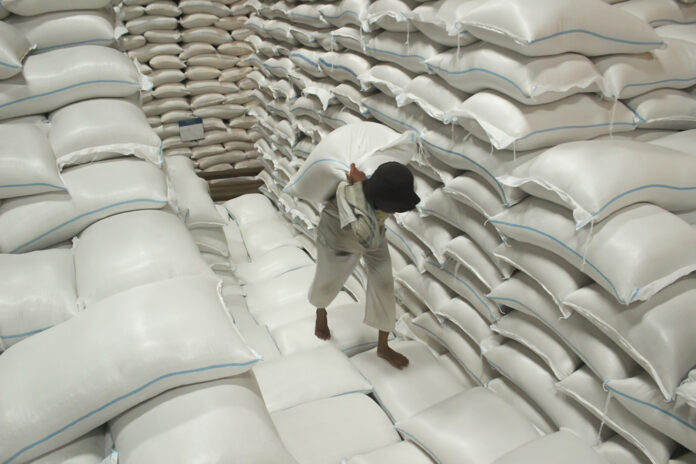The Department of Agriculture has urged the House of Representatives to extend the Rice Competitiveness Enhancement Fund created under the Rice Tariffication Act until 2030 as it cited significant gains of the rice industry, particularly in increasing the country’s rice output and providing more resources to help poor farmers.
Otherwise known as Rice Fund, RCEF represents the tariff collected from rice imported by the private sector between 2019 and 2025 and allocated to modernize and improve productivity of the rice industry. A total P10 billion of the Rice Fund is used every year to mechanize rice farming; provide better seeds and other inputs to boost yield and increase farmers income; as well extend credit and extension services to farmers.
Rice farmers tilling less than 2 hectares also get financial assistance from the Rice Fund.
In a testimony before the Committee on Agriculture of the House of Representatives chaired by Quezon Rep. Wilfrido Enverga, DA Undersecretary for Rice Industry Development Christopher Morales noted that since the passage of the RTL, the government has distributed over 15 million sacks of certified rice seeds to 1.2 million farmers as well as 27,508 machinery, equipment and post-harvest facilities to improve efficiency and reduce wastage.
He said monies from the Rice Fund also provided 250,000 farmers training in better farming technologies, P4.6 billion in credit, and P20.1 billion in financial assistance.
“While we are on the direction toward our desired impacts, we still have a long way to go,” said Undersecretary Morales, underscoring the need to extend the Rice Fund when its six-year life ends this year. “The extension of the Rice Competitiveness Enhancement Fund until 2030 and reallocation of funds towards farm machinery, seed development, and training and extension services are recommended, with special attention given to soil health improvement initiatives,” he said.
In a separate presentation on the impact of the implementation of the RTL, Flordeliza Bordey, Philippine Rice Research Institution Deputy Executive Director for Special Concerns on the Implementation of Rice Competitiveness Enhancement Fund, told lawmakers that rice yield between 2019 and 2023 rice yield per hectare has risen by 21 percent during the dry season from 3.63 metric tons to 4.36 metric tons, respectively. During the wet season, yield was up 9 percent to 4.03 metric tons over the five year period, she said.
Cost of production has also gone down to P13.64 a kilogram in 2023 from P15.24 a kilo in 2019 during the dry season and to P14.92 per kilo from P15.34 a kilo over the same period, said Bordey.
“We have shown that over the past nine (planting) seasons that if farmers use the technologies we have introduced, more than five tons per hectare could be produced at a cost of around P10 per kilogram,” he said.
Undersecretary Morales delivered the presentation on behalf of Agriculture Secretary Francisco P. Tiu Laurel Jr., who is traveling overseas. The DA chief earlier expressed support for the extension of the RTL but with changes that would further improve the rice industry and the lives of farmers.
Undersecretary Morales said that as Congress revisits the Rice Tariffication Law, the DA suggests that lawmakers consider areas the department has identified to enhance the law and maximize its impact on the rice industry and the lives of farmers. “Our goal is to address existing gaps and better meet the needs of our farmers and stakeholders,” he said.
Among the adjustments the DA has identified include greater allocation of funds for farm inputs and post-harvest facilities to boost productivity and rice yield as well as lessen wastage; imposition of timing restrictions on import permits to control arrivals during harvest season; strengthen the regulatory functions of the Bureau of Plant Industry; and allow the National Food Authority to secure buffer stock through alternative schemes.
Undersecretary Morales said helping rice farmers will not only improve the lives of millions dependent on the industry but millions of poor Filipino families who spend nearly 20 percent of their budget on rice.
High prices of rice has kept the inflation rate elevated, preventing the central bank from lowering interest rates that have been aggressively raised since 2022. High interest rates weighs on business activities and consumer spending.
“Our focus on enhancing the competitiveness of rice production in the Philippines is pivotal for improving the livelihoods of our farmers,” Morales told the congressional committee on agriculture.







